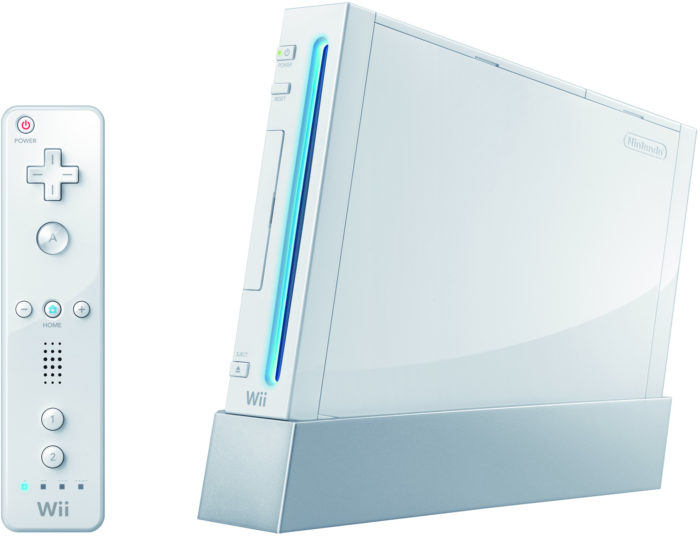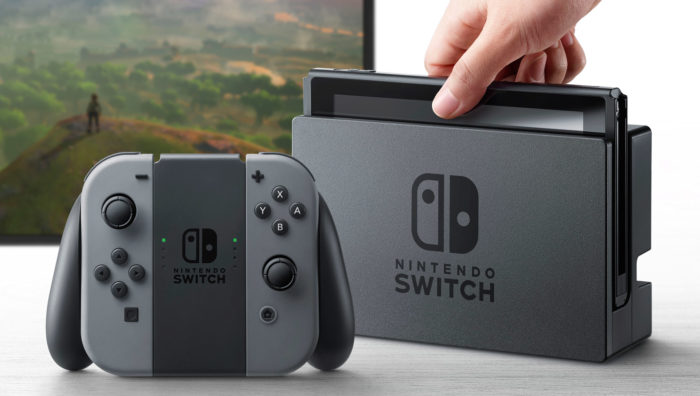Nintendo entered the console market in 1985 with the NES. It had two buttons, a directional pad that allowed players to move in four directions, and supported beautiful 8-bit graphics. It was the first successful home console after Atari went bankrupt and caused the video game crash of 1983. Nintendo breathed new life into the young industry. And now, 32 years after they got into the console business, Nintendo is releasing their latest piece of hardware: the Nintendo Switch.
The Switch’s reveal last week led to many doubting Nintendo’s future in the console business. The console will launch with only five games and while it is a very impressive piece of hardware, it is still less powerful than the Xbox One and PS4 and will not have as much third party support as either of those consoles.
Even though some people may be saying that the Switch could mark the end of Nintendo in the console manufacturing business, a video games industry without Nintendo is a bad thing overall. The company has guided the industry in many ways, and while it may have taken a backseat to Microsoft and Sony in recent years, it still has a lot of clout.

Nintendo’s biggest contribution has long been innovation. They don’t just create systems with better graphics but think of how new technology can lead to new ways to play. The NES introduced the D-pad, allowing for more precise control. The SNES simply added two more face buttons, giving the player more inputs. The next big shift came with the Nintendo 64.
The N64 was Nintendo’s first 3D console. No longer were players forced to traverse largely 2D areas. They could now explore vast worlds. Hyrule Field went from a series of screens to a wide-open space. Link could stand at one end and see the other end of the field disappear over the horizon. Mario no longer had to jump up and down on a 2D screen that scrolled as he ran. The D-pad didn’t quite cut it when players suddenly needed to move in more than four directions, so the Japanese toymaker introduced the analogue stick. Suddenly it was easy to run in circles, flip across gaps, or move blocks around dingy dungeons. The shoulder buttons also added more inputs without overcrowding the face of the controller.
The console itself was a graphical powerhouse at the time. And the way that the company translated many of their most popular franchises from 2D to 3D without losing what made each game great was a triumph in game design. The lock on and auto jump, which were first introduced in The Legend of Zelda: Ocarina of Time, changed how players interacted with simple things like jumping between ledges and keeping track of enemies as they leap and slither across arenas. Not only did Nintendo consider how they could move games forward, but how their games needed to move forwards as well.
Innovation has never just been about having the most powerful, sleekest looking box, but using whatever unique attributes they imbued their consoles with to add unique foils to their games that no other console could offer. They showed the world a new way to experience video games in the home with the NES and then presented a way to take those experiences on the go with the GameBoy. The Nintendo DS took this a step further, utilizing a dual screen structure, with the bottom screen being a touch screen. Not only could the face buttons be used to play, but the touch screen allowed for multiple unique inputs, changing the way we interact with titles. Mario Kart just used it as a place to display the map, while The Legend of Zelda completely switched control of Link to the bottom screen.

Another great example of this is the WII. Motion controls were an incredibly new concept in 2006. Not only did the Wii Remote and Nunchuck replace some traditional button inputs with waves and waggles, but it made video games more approachable. Nintendo has constantly reinvented the way we think about interaction within games.
A world without Nintendo would mean a world without this kind of innovation. Consoles released by Sony and Microsoft have improved graphics and controllers, but the way the player interacts with the game hasn’t changed much in over 20 years. Nintendo implements new technologies like motion control and touch displays into their devices, even though this means that they need to develop their games around these features.
The Wii U didn’t take off in the way Nintendo likely hoped it would, but it did offer a new way to interact with a home gaming console. A controller mixed with a tablet provided players with an experience similar to that of the Nintendo DS but on a larger scale. Even the 3DS, which was pretty much just a DS with an analog stick and glasses-less 3D, was a breath of fresh air.
Look at pretty much any one of Nintendo’s systems they have released over the past 30 years and you’ll also see a shift in the way the gaming industry approaches gameplay and control. The Nintendo Switch is just the next step in Nintendo’s revitalization of gaming. They have never worried about having the best graphics or putting out the most games, they always strive to offer something different. Without Nintendo, the idea of playing games on a TV and seamlessly transitioning to portable play likely would not have become a reality, at least not for years.

Video games need Nintendo. Sure, their series could easily be developed for other platforms, but the way they use their unique consoles to implement unique and thoughtful ideas into their titles cannot be replicated. They may not have – and it is possible they will never reclaim – the monopoly they once had on the market, but if they continue to focus on innovation and delivering new ways to play that no other publisher does, we’ll all have more fun playing games.
Nintendo’s identity is built on its past as a toymaker. The more weird and wacky products it puts on shelves, the more gamers have to enjoy. We need Nintendo to keep doing what they do. There is a reason that everyone’s ears perk up the instance the company announces a new console. There is an understanding that a Nintendo system will always be something different, setting itself apart from the competition, regardless of the flaws it may have.
Xbox and PlayStation aren’t all that different these days, so we need a third player to offer an incredibly different approach to playing video games, and Nintendo does just that.
